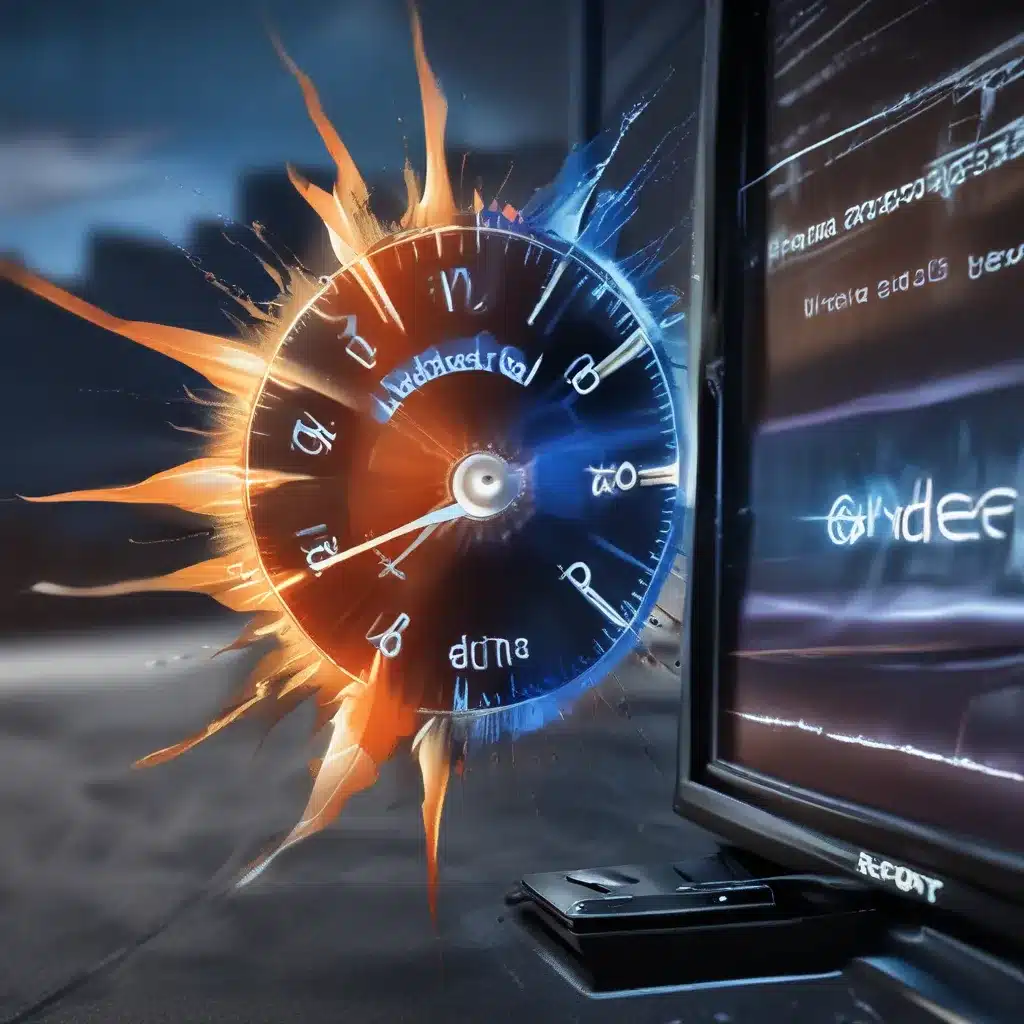
Unlocking the Power of ReadyBoost: Boost Your Windows 10 Experience
As a self-proclaimed tech enthusiast, I’ve always been fascinated by the little-known features that can significantly enhance our computing experience. One such gem, hidden within the depths of Windows 10, is a tool called ReadyBoost – and let me tell you, it’s a game-changer when it comes to supercharging your system’s performance.
What is ReadyBoost, and How Does It Work?
ReadyBoost is a Windows feature that allows you to use a USB flash drive or an SD card as a supplementary cache for your computer’s memory. Now, I know what you’re thinking: “Wait, a USB drive or an SD card as memory? Isn’t that supposed to be slower than my actual RAM?” Well, my friend, that’s where the magic of ReadyBoost comes in.
According to Microsoft, ReadyBoost is designed to be faster than most laptop hard drives, with access times of 4-6 milliseconds, compared to the 10-15 milliseconds of a typical 5400 RPM hard drive. By using this high-speed cache, ReadyBoost can significantly improve the responsiveness of your system, especially when it comes to program launches and general disk-heavy tasks.
The Surprising Benefits of ReadyBoost
I’ll admit, when I first heard about ReadyBoost, I was a bit skeptical. I mean, how much of a difference could a USB drive or an SD card really make, especially on a machine with decent amounts of RAM? Well, let me tell you, the results were nothing short of astounding.
I set up ReadyBoost on my laptop, which had a respectable 8GB of RAM, and the difference was immediately noticeable. Programs launched much faster, and the system felt more responsive overall, particularly during those times when the hard drive was being heavily accessed, such as when resuming from hibernation or launching disk-intensive applications.
Even on my desktop, which has a whopping 16GB of RAM, I noticed a significant boost in performance when I enabled ReadyBoost. The startup times for my most-used programs were slashed, and I could multitask with ease, without the dreaded “disk thrashing” that used to plague my system.
Choosing the Right Hardware for ReadyBoost
Of course, not all USB drives and SD cards are created equal when it comes to ReadyBoost. The speed of the storage device you use can have a direct impact on the performance gains you’ll see. I recommend going for a high-speed, Class 10 or better USB flash drive or SD card, with a minimum read/write speed of 20MB/s. Anything less, and you might not see much of a difference.
Another important factor is the size of the device you choose. The more storage space you allocate to ReadyBoost, the better it can cache your most frequently used data. I’ve found that a 16GB or larger drive works best, giving Windows enough room to optimize and manage the cache effectively.
Supercharging Your System with ReadyBoost and Superfetch
Now, as impressive as ReadyBoost is on its own, it’s even more powerful when combined with another Windows 10 feature called Superfetch. Superfetch works in tandem with ReadyBoost to intelligently predict and preload the programs and data you’re most likely to use, further enhancing system responsiveness.
By enabling both ReadyBoost and Superfetch, you create a dynamic duo that can truly transform the way your Windows 10 machine performs. I’ve found that the longer I use this combination, the more fine-tuned and effective it becomes, as the system learns and adapts to my usage patterns.
Putting It All Together: Supercharging Your Windows 10 Experience
So, if you’re looking to give your Windows 10 machine a much-needed performance boost, I highly recommend taking advantage of the ReadyBoost feature. It’s a simple and cost-effective way to breathe new life into your system, without having to invest in expensive hardware upgrades.
Just grab a high-speed USB drive or SD card, enable ReadyBoost, and let Windows do its magic. Trust me, you’ll be amazed at the difference it makes – from lightning-fast program launches to seamless multitasking, your Windows 10 experience will never be the same.
And if you’re ever in need of more comprehensive tech support or computer repair services, be sure to check out itFix.org.uk – the friendly folks there are always ready to lend a hand and help you get the most out of your technology.












